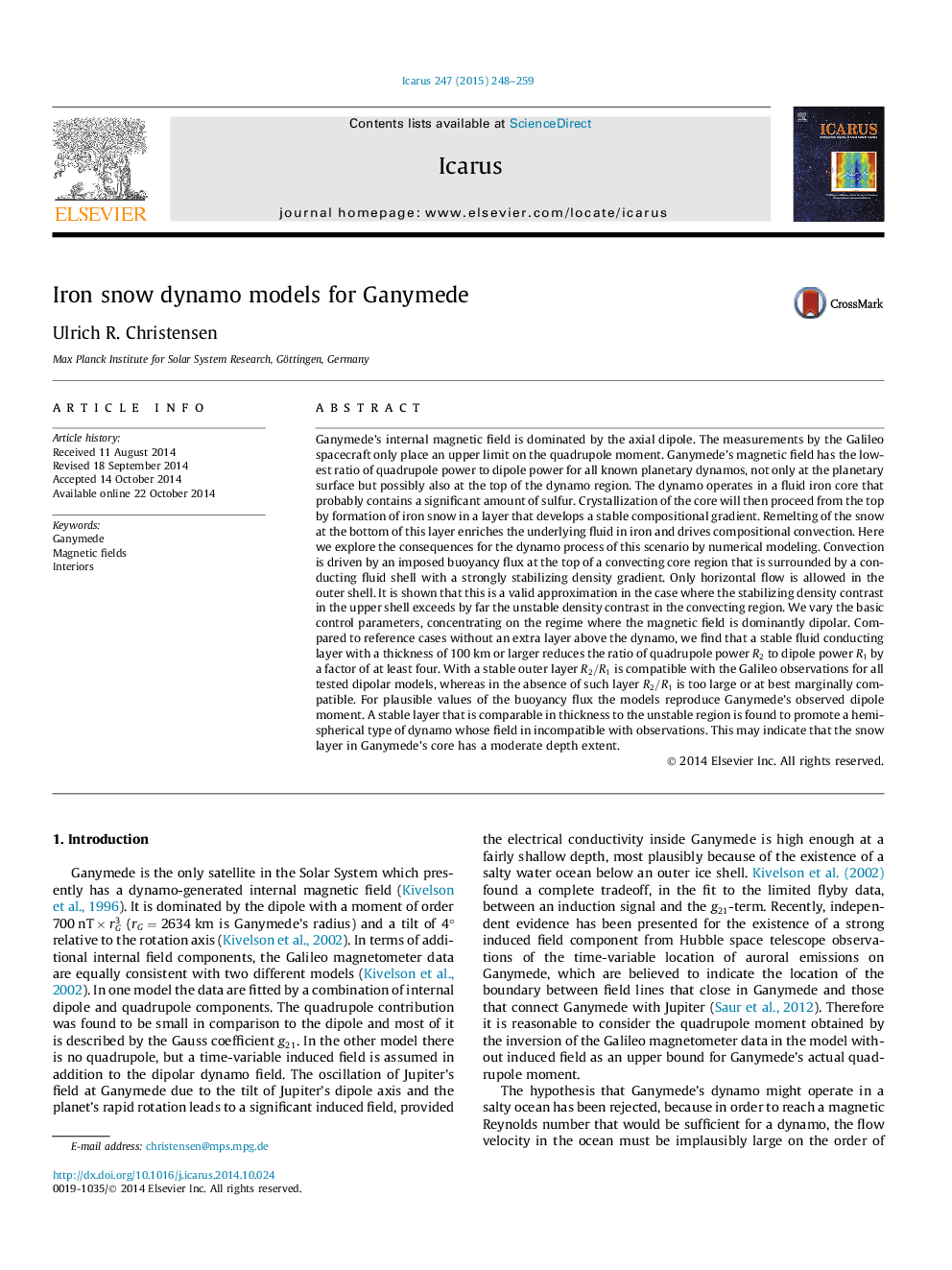| کد مقاله | کد نشریه | سال انتشار | مقاله انگلیسی | نسخه تمام متن |
|---|---|---|---|---|
| 8137094 | 1523543 | 2015 | 12 صفحه PDF | دانلود رایگان |
عنوان انگلیسی مقاله ISI
Iron snow dynamo models for Ganymede
ترجمه فارسی عنوان
مدل های داینامیک آهن برف برای گانیمد
دانلود مقاله + سفارش ترجمه
دانلود مقاله ISI انگلیسی
رایگان برای ایرانیان
کلمات کلیدی
گانیمید، میدانهای مغناطیسی، فضای داخلی،
موضوعات مرتبط
مهندسی و علوم پایه
علوم زمین و سیارات
علوم فضا و نجوم
چکیده انگلیسی
Ganymede's internal magnetic field is dominated by the axial dipole. The measurements by the Galileo spacecraft only place an upper limit on the quadrupole moment. Ganymede's magnetic field has the lowest ratio of quadrupole power to dipole power for all known planetary dynamos, not only at the planetary surface but possibly also at the top of the dynamo region. The dynamo operates in a fluid iron core that probably contains a significant amount of sulfur. Crystallization of the core will then proceed from the top by formation of iron snow in a layer that develops a stable compositional gradient. Remelting of the snow at the bottom of this layer enriches the underlying fluid in iron and drives compositional convection. Here we explore the consequences for the dynamo process of this scenario by numerical modeling. Convection is driven by an imposed buoyancy flux at the top of a convecting core region that is surrounded by a conducting fluid shell with a strongly stabilizing density gradient. Only horizontal flow is allowed in the outer shell. It is shown that this is a valid approximation in the case where the stabilizing density contrast in the upper shell exceeds by far the unstable density contrast in the convecting region. We vary the basic control parameters, concentrating on the regime where the magnetic field is dominantly dipolar. Compared to reference cases without an extra layer above the dynamo, we find that a stable fluid conducting layer with a thickness of 100Â km or larger reduces the ratio of quadrupole power R2 to dipole power R1 by a factor of at least four. With a stable outer layer R2/R1 is compatible with the Galileo observations for all tested dipolar models, whereas in the absence of such layer R2/R1 is too large or at best marginally compatible. For plausible values of the buoyancy flux the models reproduce Ganymede's observed dipole moment. A stable layer that is comparable in thickness to the unstable region is found to promote a hemispherical type of dynamo whose field in incompatible with observations. This may indicate that the snow layer in Ganymede's core has a moderate depth extent.
ناشر
Database: Elsevier - ScienceDirect (ساینس دایرکت)
Journal: Icarus - Volume 247, February 2015, Pages 248-259
Journal: Icarus - Volume 247, February 2015, Pages 248-259
نویسندگان
Ulrich R. Christensen,
